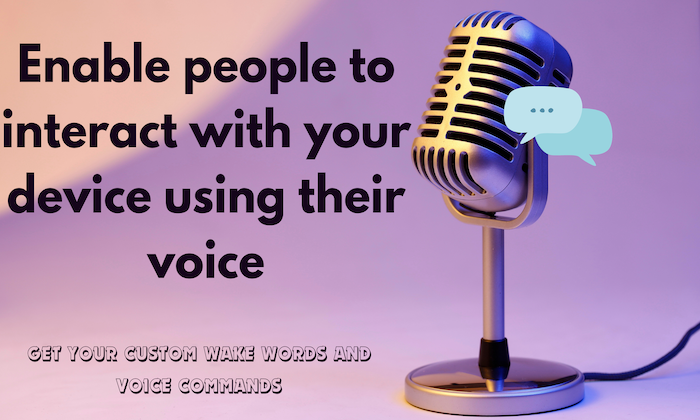How are wake word datasets used in smart speakers?
Smart Speakers
Wake Word
Voice Recognition
Smart speakers rely on wake word datasets to activate on-device keyword-spotting models that listen continuously while consuming minimal power. At FutureBeeAI, we ensure best-in-class performance by providing high-quality, multilingual speech datasets tailored for accuracy and robustness in real-world applications.
Key Takeaways
- FutureBeeAI's datasets support over 100 languages, ensuring speech data diversity.
- Customizable solutions via the YUGO platform cater to specific client needs.
- Cutting-edge technology, including transformer-based models, enhances recognition capabilities.
Defining Wake Word & Command Data at FutureBeeAI
Our wake word detection datasets include more than 50 popular triggers like "Alexa," "Hey Siri," and "OK Google," along with over 200 brand-specific wake words such as "Bixby" and "LG Smart." These datasets are crucial for enabling smart speakers to accurately recognize activation phrases, tailored for diverse languages and speaking styles.
Why High-Quality Wake Word Data Is Critical
High-quality wake word datasets are essential for the following reasons:
- Enhanced Recognition Accuracy: FutureBeeAI’s datasets cover a wide range of demographics, languages, and accents, ensuring models perform well in varied real-world conditions.
- Improved User Experience: Minimizing false activations and missed commands leads to higher satisfaction and greater trust in the system.
- Competitive Advantage: Superior datasets lead to better voice recognition, helping companies stay ahead in the increasingly competitive smart speaker market.
Four-Phase Wake Word Data Workflow
At FutureBeeAI, we follow a structured four-phase workflow to ensure the highest quality wake word data:
Data Collection: Our YUGO platform facilitates remote contributor onboarding, ensuring a wide range of high-quality audio recordings from various environments.
Voice Command Annotation: We use a meticulous audio data QA workflow, reducing transcription error rates to less than 1%. A two-layer QA process ensures precise labeling and accurate transcription.
Model Training: We utilize transformer-based acoustic encoders and other advanced models to train systems to efficiently recognize wake word patterns.
Testing and Iteration: Continuous testing with validation datasets ensures that models can handle accents, speaking speeds, and environmental noises effectively.
Overcoming Key Challenges: Diversity, Noise & Speaker Variability
Creating effective wake word datasets comes with its own set of challenges, including:
Comprehensive Data Diversity: Covering over 100 languages and dialects, we mitigate biases and enhance adaptability by ensuring our datasets capture diverse linguistic and regional variations.
Controlled Noise Environments: We record data in noise-controlled settings to enhance robustness, ensuring accurate detection even in real-world environments with ambient noise.
Managing Speaker Variability: Including varied pitch, tone, and accent data ensures our models can accurately detect wake words across different speaker profiles, increasing generalization.
FutureBeeAI Best Practices: From Collection to Continuous Improvement
To maintain the highest standards, FutureBeeAI follows these best practices:
Strategic Data Collection: We implement a systematic approach to gather recordings across a comprehensive range of accents, ages, and speaking styles, ensuring that models perform well across diverse user populations.
Rigorous Annotation Processes: Our two-layer QA process ensures high annotation accuracy, minimizing errors and maximizing the reliability of the wake word recognition.
Continuous Dataset Updates: We regularly update our datasets to account for evolving language patterns and user behaviors, ensuring models remain relevant and perform optimally over time.
Custom Collection Solutions
For clients with specific needs, FutureBeeAI offers custom dataset collection through the YUGO platform. This includes:
- Tailored participant demographics
- Custom wake word triggers
- Environmental context tagging
- Metadata capture for detailed model training
FAQ
Q: How often should datasets be refreshed?
A: For optimal performance, it is recommended to refresh datasets every 6–12 months to account for evolving language patterns and user interactions.
Q: Can FutureBeeAI’s data support edge device implementations?
A: Yes, our datasets are optimized for small-footprint models, making them ideal for on-device processing in edge devices.
Unlocking the Potential of Voice AI with FutureBeeAI
FutureBeeAI’s wake word and command datasets are essential for developing precise, responsive voice systems. By leveraging our high-quality, diverse datasets, companies can create innovative and competitive smart speaker solutions that enhance user experiences.
To explore how FutureBeeAI can support your next project, contact us or request a sample dataset today!
What Else Do People Ask?
Related AI Articles
Browse Matching Datasets
Acquiring high-quality AI datasets has never been easier!!!
Get in touch with our AI data expert now!








